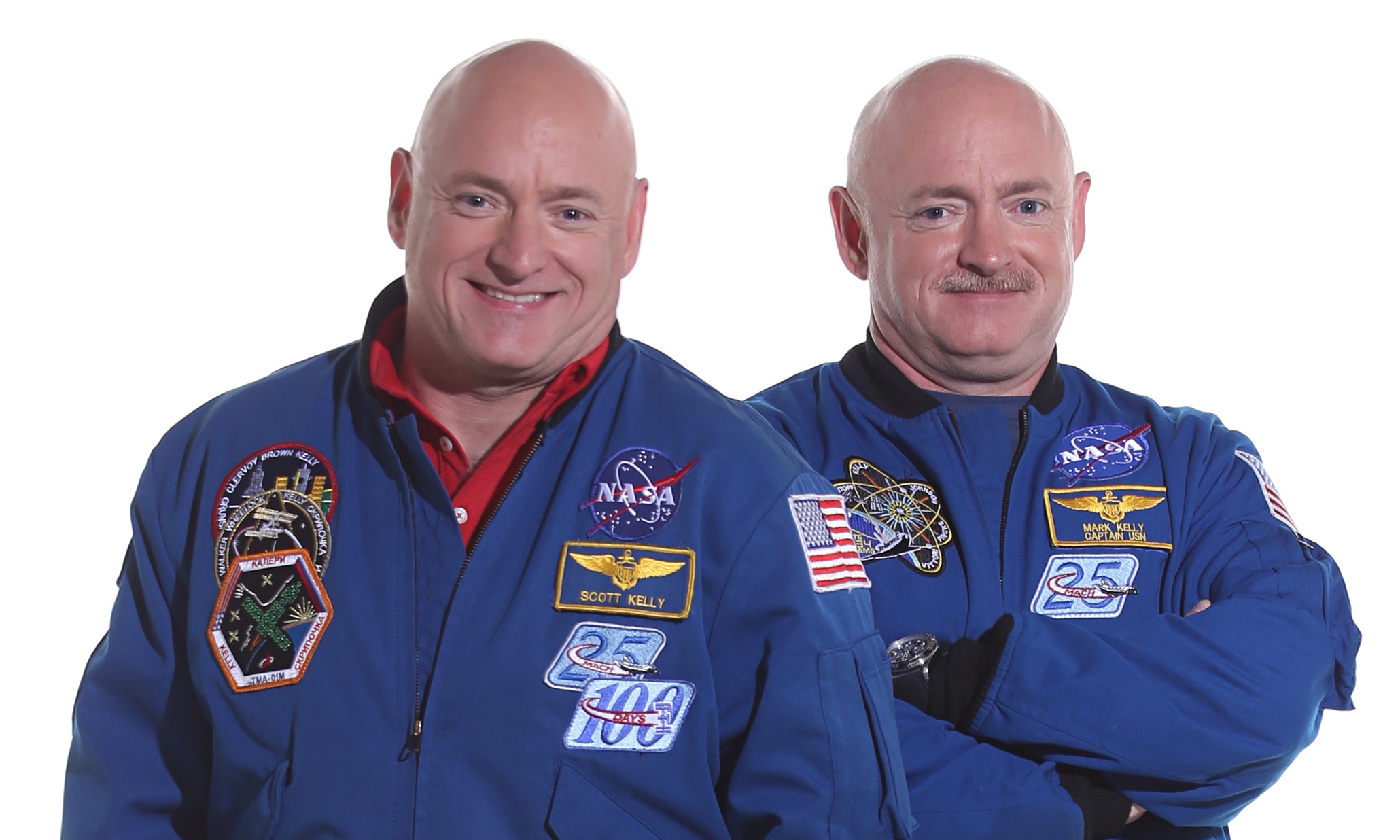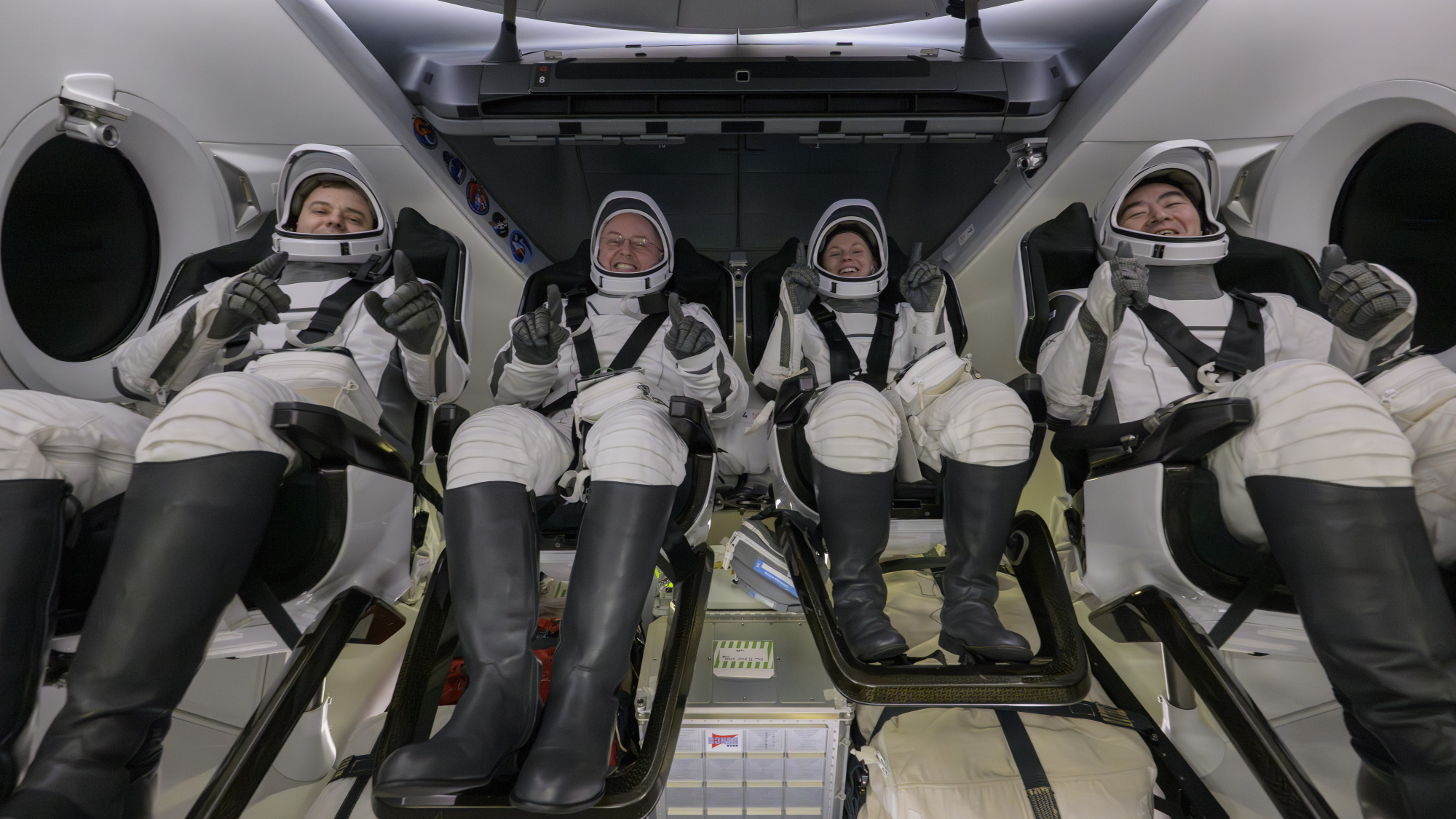How 1-Year Space Mission Affected Astronaut Twin Scott Kelly: Early Results

Spending a year in space affected former NASA astronaut Scott Kelly's body in subtle but potentially significant ways, new research suggests.
Kelly and cosmonaut Mikhail Kornienko flew the first-ever yearlong mission aboard the International Space Station (ISS), wrapping up the flight with a touchdown on the steppes of Kazakhstan last March. The goal of the project — which is ongoing, in the data-analysis phase — is to gauge the physiological and psychological impacts of long-duration spaceflight, to help prepare for crewed missions to Mars and other distant destinations.
Part of this work involves Scott Kelly's identical twin brother Mark — a former NASA astronaut who flew on four space shuttle missions. Mark stayed on the ground during Scott's yearlong flight, serving as an experimental control that would allow scientists to detect genetic changes that spaceflight induced in Scott. [By the Numbers: Astronaut Scott Kelly's Year-in-Space Mission]
Multiple research teams are working to suss out those changes, as part of the NASA Twins Study. And the early results — which scientists detailed last week at the NASA Human Research Program’s annual "Investigators’ Workshop" in Galveston, Texas — have already highlighted some interesting developments.
For example, one team found that the telomeres — the regions at the ends of chromosomes — in Scott Kelly's white blood cells got longer during the mission. Telomeres help protect chromosomes from deterioration, and they get shorter over the decades as people age.
Scott's telomere lengthening "could be linked to increased exercise and reduced caloric intake during the mission," NASA officials wrote in a description of the newly announced findings.
"However, upon his return to Earth, they began to shorten again," the officials added. "Interestingly, telomerase activity (the enzyme that repairs the telomeres and lengthens them) increased in both twins in November, which may be related to a significant, stressful family event happening around that time."
Breaking space news, the latest updates on rocket launches, skywatching events and more!
Another research team found an apparent decrease in bone formation during the second half of Scott's space mission, and another group identified a slight decrease in cognitive ability (thinking speed and accuracy) shortly after he touched down. However, this latter trend is not substantial enough to suggest that the performance of Mars-bound astronauts will be appreciably affected, NASA officials said.
In addition, whole-genome sequencing of Mark and Scott revealed that both twins have hundreds of unique genetic mutations.
"RNA (transcriptome) sequencing showed more than 200,000 RNA molecules that were expressed differently between the twins," NASA officials wrote. Researchers "will look closer to see if a 'space gene' could have been activated while Scott was in space," the officials added.
All of these results are preliminary; the Twins Study scientists will aim to produce a "joint summary publication" later this year, NASA officials said. The researchers will also publish papers about their findings in scientific journals.
Follow Mike Wall on Twitter @michaeldwall and Google+. Follow us @Spacedotcom, Facebook or Google+. Originally published on Space.com.

Michael Wall is a Senior Space Writer with Space.com and joined the team in 2010. He primarily covers exoplanets, spaceflight and military space, but has been known to dabble in the space art beat. His book about the search for alien life, "Out There," was published on Nov. 13, 2018. Before becoming a science writer, Michael worked as a herpetologist and wildlife biologist. He has a Ph.D. in evolutionary biology from the University of Sydney, Australia, a bachelor's degree from the University of Arizona, and a graduate certificate in science writing from the University of California, Santa Cruz. To find out what his latest project is, you can follow Michael on Twitter.
